-
Acequia irrigators in northern NM – surface water and groundwater data on the web
-
Ranchers in central NM – soil moisture and forage growth
-
Irrigators in southern NM – stakeholder co-developed irrigation and crop planning
-
Community planners in the Rincon watershed – restoration to recharge groundwater
COMMUNITY WATER & WATERSHED MANAGEMENT
Restoring Agricultural Valley River Health in New Mexico
Restoring Agricultural Valley River Health in New Mexico
By Dr. Connie Maxwell, Research Scientist, NM WRRI, & Dr. Sam Fernald, Director, NM WRRI and Professor of Watershed Management
NM WRRI was awarded and has kicked off a New Mexico Environment Department River Stewardship project entitled “Improving Watershed Hydrologic Function to Restore Health of River Ecosystems alongside Farming and Rangeland Communities of the Rio Grande Basin in New Mexico.” The outcomes that address the River Stewardship Program are the resulting increase in surface water quality and river health from addressing the root of the issues. The project received the notice to proceed on May 23, 2023, and is expected to be completed by June 30, 2025.
The project includes three locations across the Rio Grande river continuum, from the headwaters to the middle and Lower Rio Grande, and from the forests to the desert, which all have varying river characteristics, ecoregions, and vegetative cover, as well as different communities. Canjilon Creek is a forested headwater system of the Rio Chama, which is a tributary to the Rio Grande; El Guique and Estaca are communities in the river valley of the Rio Grande in northern New Mexico; and the Placitas Arroyo watershed is a relatively large watershed that flows into southern New Mexico Rio Grande valley. Like most agricultural river valley systems throughout New Mexico and the Southwest, all sites also share similar underlying challenges of increasing runoff, erosion, and pollutant delivery.
Communities are severely impacted by the root causes of the issues that are degrading the Rio Grande and its tributaries, thus our team employs both a community-based and watershed-based approach. The locations were identified by community members as having critical issues that reflect typical challenges for the regions. The two northern New Mexico locations were chosen with support from New Mexico Acequia Association and NM WRRI’s initiative Building Agriculture and Water Resilience, and the southern New Mexico location, with help from the South Central New Mexico Stormwater Management Coalition during a regional watershed planning effort. A watershed-based approach is also critical, as the effects of climate change and drought on surface water quality and river health begin at the upper headwaters. As many in New Mexico, and across the Southwest, are experiencing, climate change has already begun to have significant impacts. Water cycle intensification of dry and wet periods and aridification from warming temperatures and the resulting increased evaporative demand are driving a key suite of processes impairing river water quality and stream habitat. Reduced vegetative land cover and infiltration coupled with more extreme rainfall events are causing increased flooding, erosion, and sediment delivery to river ecosystems.
The goal of this project is to counter water cycle intensification by reducing flooding and sediment yield through the implementation of watershed management practices. The project objectives are 1) Increase surface water quality, and 2) Increase watershed and riparian functions of spreading and filtering flows. Practices will be implemented that increase vegetative cover, increase floodplain inundation, delay surface runoff, increase infiltration, reduce erosion, and reduce delivery of sediment and other contaminants to the receiving river.
The forested headwater location, Canjilon Creek, is a 24-mile stream in the Carson National Forest of New Mexico that flows into the Rio Chama. Canjilon farmers typically get two irrigation distributions a season. Recently, often only one has been available. Upper watershed river systems optimally function as sponges that store water in their floodplains across the full valley. As temperatures and storm intensities increase, erosion disconnects channel flows from their adjacent floodplains, floodplains begin to dry out and cloud the flows with silt, water temperatures rise, and native cut-throat trout struggle. As increase. This work aims to restore the natural functions of the river system to provide optimal water storage within the riparian corridor as described by Norman Vigil, Upper Chama Soil and Water Conservation District chairman as well as a local farmer. Using approaches that mimic beaver activity by slowing and infiltrating flows into floodplains, the local stakeholders’ goal is to build up the base flow and extend the flow to July and restore the fisheries. The team for this location includes the Upper Chama Soil and Water Conservation District (UCSWCD); NMSU’s Cooperative Extension Service Extension Agricultural Agent; Keystone Restoration Ecology, Inc. (KRE), Trout Unlimited, Inc., and as a collaborator, the Chama Peak Alliance.
In the El Guique and Estaca communities in the river valley of the Rio Grande in northern New Mexico, large rainfall events that hit the Black Mesa and the high gradients along its face have historically caused downstream flooding and cross drainage problems to the river channel. Despite several dams in the area, high energy floods still pass through the asphalt and aggregate mine, Espanola Transit Mix, Inc. frequently overwhelm the agricultural community downstream. A berm prevents flood flows from the arroyos entering the Rio Grande with few areas of connection, which is a frequent issue along the Rio Grande. The project starts with practices that slow and spread flows at the source, atop the Black Mesa and down through the uplands. At a significant confluence in the valley below, the team will spread the flow to drop out sediment and debris and create a new connection through the berm. At two riparian areas, the team will also remove invasive species to reduce competition to the extensive native species present. The team for this location includes the Upper Chama Watershed District; Española Mercantile Company; Private Landowners; East Rio Arriba Soil and Water Conservation District; Mesa Prieta Petroglyph Project; Keystone Restoration Ecology, Inc.; Ancestral Lands Conservation Corps; and Natural Channel Design.
The Village of Hatch is directly downstream from the Placitas Arroyo watershed which flows into the southern New Mexico Rio Grande. Hatch experienced a significant flood in 2006, and one of the major sources of flooding was the Placitas Arroyo. The Rio Grande receives significant sediment deposits into its channels from flood flow events from this and other watersheds throughout the region. Local stakeholders have been considering emergency measures to address scouring watershed flows for years. This work will help restore the natural functions of the arroyo headwaters to the river system to slow, spread, and filter flows of sediments, nutrients, and contaminants. The community then additionally benefits from reduced flooding risk and increased watershed health. The team for this location includes the State Land Office; the Caballo Soil and Water Conservation District (CSWCD); and High Desert Native Plants.
Meet the Researcher Andrew Robertson, Supervisory Hydrologist, U.S. Geological Survey
Andrew Robertson, Supervisory Hydrologist, U.S. Geological Survey
By Jeanette Torres, NM WRRI Program Specialist
Andrew Robertson is a Supervisory Hydrologist for the Hydrologic Assessment and Modeling Unit for the U.S. Geological Survey (USGS) New Mexico Water Science Center (NM WSC) in Albuquerque. As Unit Chief, he is responsible for supervising the professional development of graduate students and senior scientists and assisting them in their respective research focus areas. Robertson notes that the NM WSC is fortunate to have several graduate and undergraduate students working on various projects within the Center. These opportunities greatly benefit the students by providing them with experience in studying many scientific aspects of our state’s water resources.
The New Mexico Water Resources Research Institute (NM WRRI) and the NM WSC have collaborated on numerous occasions throughout the years. “Personally, I have worked with staff and professors through NM WRRI on transboundary aquifer research, NM WRRI students on the Mesilla Basin water resources monitoring program, and the development of a dissolved gas sampling device,” Robertson mentions. He looks forward to continuing his connections with NM WRRI and the possibility of collaborating on managed aquifer recharge in the near future.
Robertson’s research incorporates various projects benefiting the assessment and characterization of water resources in New Mexico. Generally, his research focuses on groundwater geochemistry and aqueous isotopic compositions, and through recent advancements from his USGS colleagues, Robertson’s research has become even more beneficial. “We have used aqueous chemical and isotopic data to determine the source and fate of constituents of concern, used repeat microgravity measurements to determine changes in groundwater storage, modeled spatial changes in snow distribution from a wildfire, and are using unmanned aircraft systems to build digital elevation models and document channel geomorphic changes,” Robertson explains. Within his field of research, Robertson states that to combat the impacts of climate variability, scientists must anticipate unexpected conditions and even model scenarios they have never observed to plan for a non-stationary future. As a strong supporter of “Aqua es Vida,” Robertson believes that by taking this forward-thinking approach, it will give resource managers and stakeholders the chance to better prepare and assess the possibility of various water futures.
Robertson earned his BS in Chemistry from Fort Lewis College in Durango, Colorado, and his MS in Water Resources from The University of New Mexico in Albuquerque. Robertson attributes his career in water research to serendipity and finds fulfillment in conducting studies to address challenging water availability questions. Being able to help students reach their full potential through research and support is also an aspect he appreciates. Regarding future research, Robertson would like to expand upon studies looking into how the distribution of precipitation in forested areas is affected by natural disturbances such as wildfires and beetle infestations.
Transboundary Groundwater Resilience Network Hosts First In-person Collaboration Event in New York City
Transboundary Groundwater Resilience Network Hosts First In-person Collaboration Event in New York City
By Ana Cristina Garcia-Vasquez, NM WRRI graduate research assistant; Kaustuv Neupane, NM WRRI graduate research assistant & Christine Tang, NM WRRI Research Scientist
The Transboundary Groundwater Resilience (TGR) Network of Networks, funded by the National Science Foundation’s Accelerating Research through International Network-to-Network Collaborations(AccelNet) program, met in New York City last week on March 23, 2023, to host an event for UN Water 2023. TGR partners and co-hosts New Mexico Water Resources Research Institute (NM WRRI) at New Mexico State University, San Diego Supercomputer Center (SDSC) and University of California San Diego, West Big Data Hub at the University of California Berkeley (UCB), and Water and Climate Coalition.
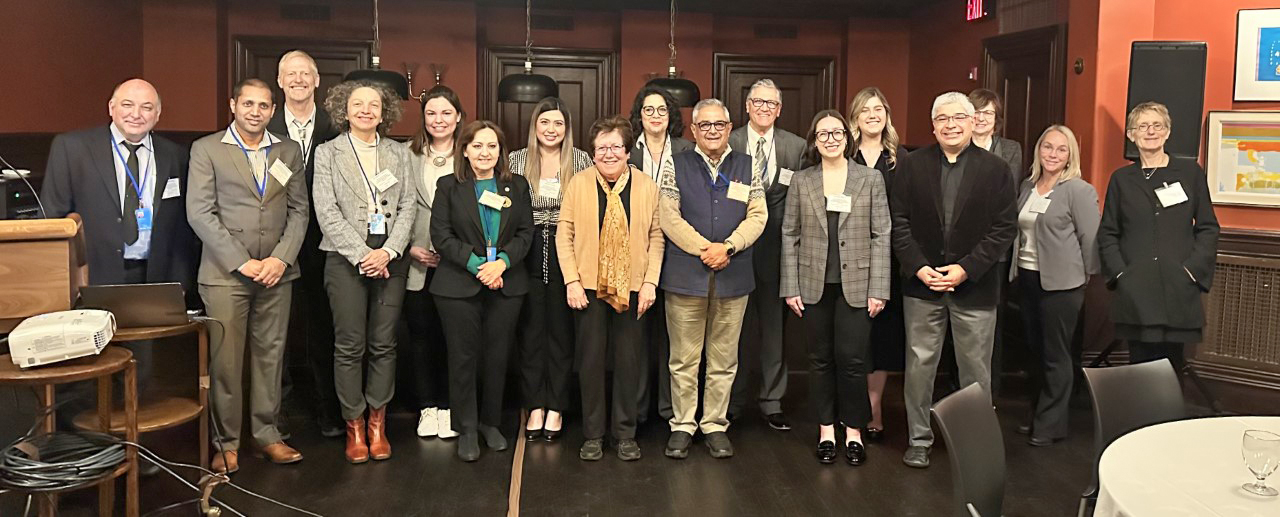
Pictured from left to right are attendees at TGR’s UN Water 2023 event, Connecting the World for Transboundary Groundwater Resilience, held in New York City on Thursday, March 23, 2023.
Top row: I. Zaslavsky, director/UCSD; S. Fernald, director/NM WRRI; E. Tapia Villaseñor, Professor, Universidad de Sonora; A.C. Garcia-Vasquez, graduate research assistant/ NM WRRI; M.E. Giner, US commissioner/IBWC; A. Granados-Olivas, professor/UACJ; J. Christopher, project manager/SDSC; M.A. Kinzer, artist
Bottom row: K. Neupane, graduate research assistant/NM WRRI; E. Lictevout, director/IGRAC; A.R. Maldonado, Mexican Commissioner/IBWC; S. Megdal, director/WRRC; D. Gyawali, former minister of water resources/Nepal; A. Atkins, executive director/West Big Data Hub; S.S Solis, Professor, UC Davis; E. Hestir, Associate Professor/UC Merced; C. Cramer, deputy director/SDSC.
This event was to further the project’s Action Agenda item #86, Connecting the World for Transboundary Groundwater Resilience , which is a commitment submitted to the UN Water Conference pledging to deliver scaled and replicable water actions used to improve water-related objectives, goals, and impacts.
This interactive 90-minute event allowed attendees to participate in discussions related to transboundary groundwater research and management, perspectives on successes, challenges, and needs, and possible solutions for transboundary groundwater collaboration.
The meeting began with a networking breakfast. Sam Fernald, director of the New Mexico Water Resources Research Institute, gave a presentation titled, Transboundary Groundwater Resilience: contributions from a network for disciplines and communities, which focused on the convergence of disciplines and community interaction as a pathway for supporting action agenda item #86.
Afterward, in the participant spotlight section, attendees shared their insights and experiences related to transboundary groundwater. This section of the event heard remarks and observations from many participants from all over the world, including TGR partners in Mexico, the US, Nepal, Sweden, and the Netherlands. A follow-up community discussion was moderated by Ashley Atkins, executive director of the West Big Data Innovation Hub at UCB and a Co-PI of TGR, and Julie Christopher, technical project manager for the West Big Data Hub and GO FAIR US, at SDSC.
Suggestions on achieving sustainable transboundary water development centered around what is needed for transboundary cooperation and what these transboundary agreements need to include. For successful cooperation, we need to consider the perspectives of all the stakeholders and build trust through better collaboration, communication, and data sharing. Dr. Elisabeth Lictevout, Director of the International Groundwater Resources Assessment Centre, stressed the importance of building trust by sharing accurate, up-to-date data and that data sharing is the best way to collaborate. Thus, we need increased investment in groundwater monitoring, data collection, and information sharing between countries and regions.
Legal agreements, policies, and regulations should promote equitable and sustainable use of groundwater, consider a long-term perspective that includes anticipating and mitigating challenges, and increase investment in sustainable management practice to ensure the continued availability of this vital resource. Preserving and protecting transboundary groundwater resources for future generations is the utmost priority.
Connecting the world for transboundary groundwater resilience is complex and challenging; however, we must undertake it to build a sustainable and resilient future for all. We must work together towards this important goal and ensure that our actions today contribute to a better tomorrow.
The event wrapped up with concluding remarks by NM WRRI graduate research assistant Ana Cristina Garcia-Vasquez, who emphasized that water connects all aspects of life. To achieve better water development, we must first learn how to communicate with each other.
For more information on becoming involved, please visit the TGR website , or sign up for the mailing list to learn about future TGR events and announcements.
NMSU publication culminates 10-year study of acequia systems
NMSU publication culminates 10-year study of acequia systems
By Jane Moorman, NMSU Marketing and Communications
LAS CRUCES – An in-depth study of centuries-old community acequia systems in northern New Mexico reveals why they have been resilient.
Since 2010, researchers from New Mexico State University, University of New Mexico, and Sandia National Laboratory have studied hydrology and cultural aspects of the of El Rito, Rio Hondo and Alcalde acequia systems.
“We wanted to understand the many facets involved in the operation of these systems and what contributes to their resiliency, not just the hydrology,” said Sam Fernald, professor in NMSU’s Department of Animal and Range Sciences. “I think we found out some of those, including the importance of the culture of the community.”
Fernald is the principal investigator of “Acequia Water Systems Linking Culture and Nature: Integrated Analysis of Community Resilience to Climate and Land Use Changes,” a research project funded by a $1.4 million grant from the National Science Foundation.
All around the world, community-based flood irrigation systems, owned and managed by self-organized farmers, deliver the natural resource of water to sustain agriculture during scarce or uneven yearly rainfall. The New Mexico Acequia Association estimates 640 small-scale systems exist throughout New Mexico.
The researchers learned that the acequia system creates a responsive mechanism for the entire community to interact with the landscape and develop a specific water management approach.
“As the neighbors work together to maintain the ditches, a cultural aspect develops that provides cohesion for the community,” said Steve Guldan, NMSU’s professor and superintendent of the Sustainable Agriculture Science Center at Alcalde.
“We learned how adaptable the system is to respond to the environmental situations. Even if it is a dry year, with not a lot of water available, the acequia commissions are able to keep the ecosystem alive. Then during wet years, they are able to expand and have a larger irrigated footprint,” Fernald said.
The 17 researchers working on the project represent 10 disciplines, including hydrology, natural resources, ecology, water management, agronomy, rangeland management, agricultural economics, anthropology, and global culture and society.
“We had a lot of community support during the gathering of data for the various studies,” Guldan said. “In the early stages, David Archuleta, an Alcalde community member and farm supervisor of NMSU’s science center, gained the trust of the local farmers, allowing us access to their property to perform our hydrological studies. That trust carried over to the social-cultural studies when they were asked to participate in group meetings and surveys.”
After establishing the collaboration between community and researchers, Fernald said, “We didn’t want to just get the data and leave. We wanted to give the results back to the communities that helped us with the research.”
NMSU’s College of Agricultural, Consumer and Environmental Sciences produced “Acequias of the Southwestern United States: Elements of Resilience in a Coupled Natural and Human System,” an eight-chapter, 90-page publication that reports on the various research findings.
The publication was edited by Adrienne Rosenberg of the Alcalde Center, with Fernald, Guldan, and José Rivera, professor emeritus at the University of New Mexico, serving as associate editors. It is available at https://aces.nmsu.edu/pubs/research/water/RR796/welcome .
“We are hoping this will provide the reader the ability to look at the whole system,” Fernald said. “It is not just about the hydrology system of surface water, groundwater and the river, but also the cultural aspects of the area.”
The chapter topics include the key concepts of a multi-disciplinary approach to acequias, cultural aspects of the Northern Rio Grande region, acequia ecosystems including surface water and groundwater interactions, role of livestock in supporting the communities, adaptation to drought, and acequia and community resiliency.
“The publication’s forward is by one of the leading acequia historians, Luis Pablo Martínez Sanmartín of Spain,” Fernald said. “He presents the global context of how this ancient system of irrigation has made contributions worldwide.”
The publication was presented during the New Mexico Acequia Association’s annual meeting in December.
The researchers are hoping the publication will be a tool for legislators and policymakers when making decisions regarding acequia systems.
In addition to the publication, scientists with Sandia Labs have brought all the data together into integrated models that set the framework for ongoing studies.
“We have a project on the Rio Hondo to provide data back to the community in real time,” Fernald said. “During our work with the communities, we realized that the acequia commissions could use the models to help make management decisions.”
Rincon Arroyo Watershed Stabilization Project
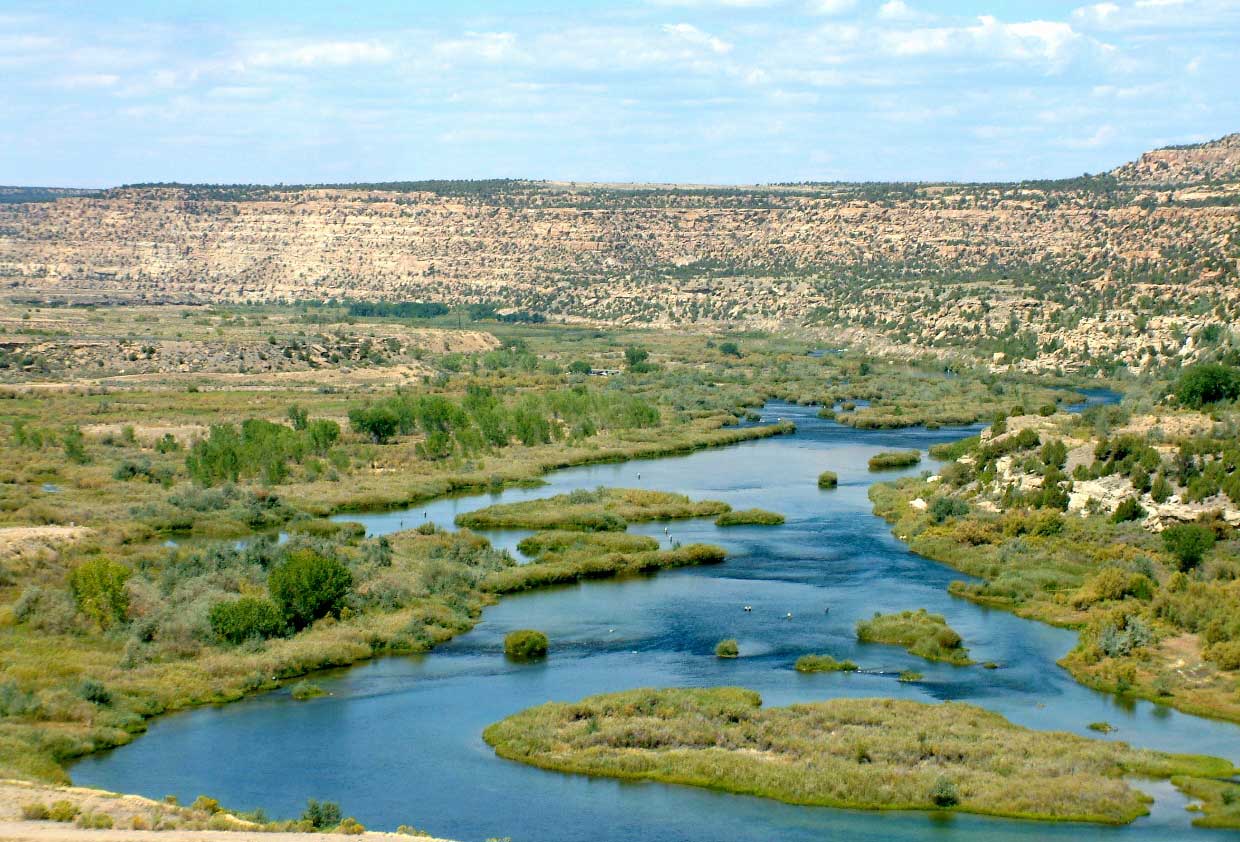
The NRCS has awarded the Doña Ana County and its Flood Commission the first Planning/NEPA phase of a Watershed Protection and Flood Prevention Operations Program for the Rincon Arroyo Watershed. Partners to the project include the NM WRRI, BLM, EBID, and the Caballo Soil and Water Conservation District. This phase aims to create a watershed plan to address the root cause of flooding, vegetation loss in the uplands that scour soils and transport sediment, which in turn clogs downstream riparian areas and over 19 miles of agricultural infrastructure, and overwhelms downstream flood control infrastructure.
NM WRRI Water and Community Collaboration Lab
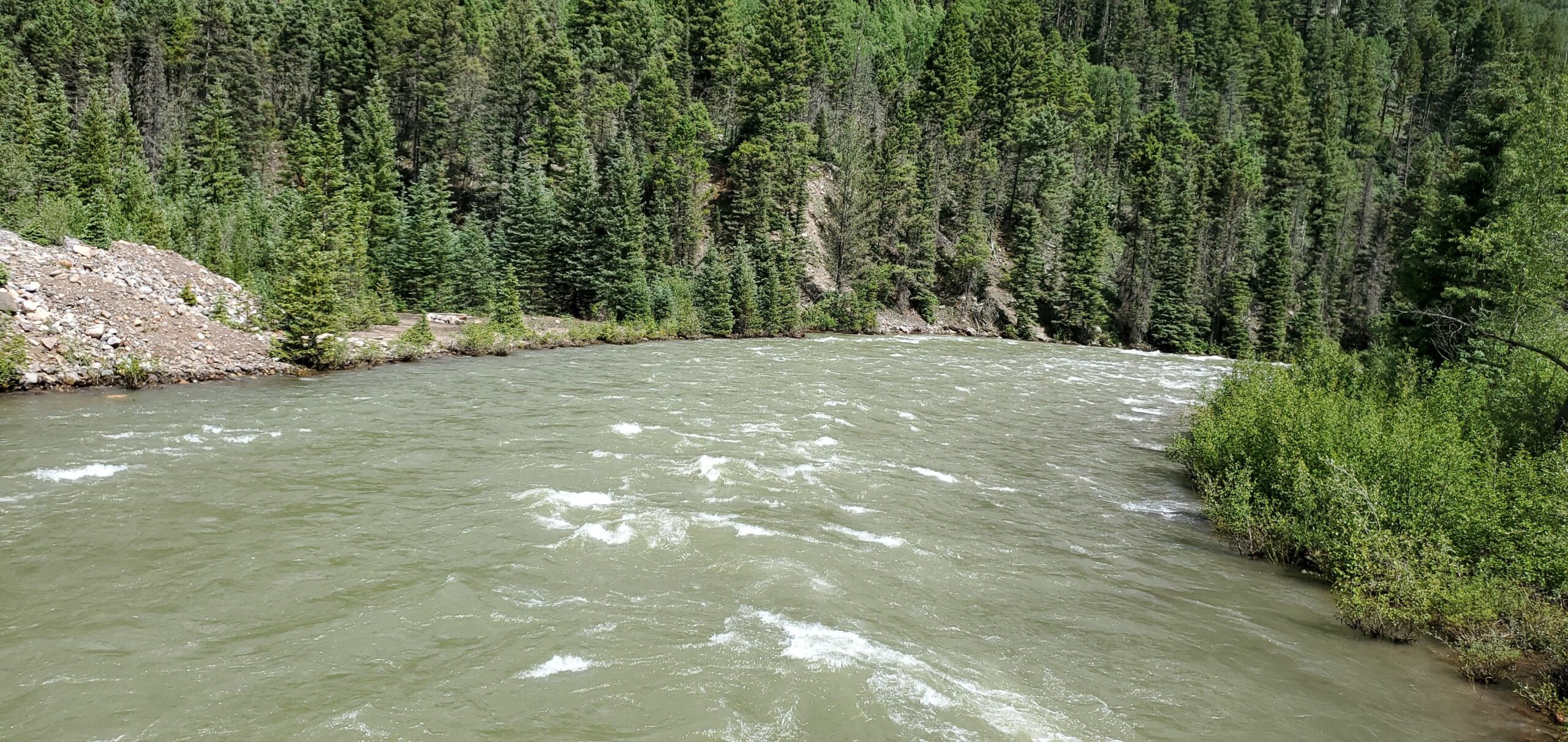
The NM WRRI Water and Community Collaboration Lab (WCC-Lab) aims to foster links between the best science, communities, and stakeholders to inform water and environmental decision-making. The WCC-Lab’s goals focus upon collaboratively developing and testing innovative and feasible approaches to the complex issues of water supply and usage in New Mexico. Results of our pilot projects in the Hatch and Mesilla Valley and the Rincon Arroyo watershed within the Valley, have led to funding of several projects by grants that are highlighted on this website
Hatch and Mesilla Valley Drought Resiliency Project
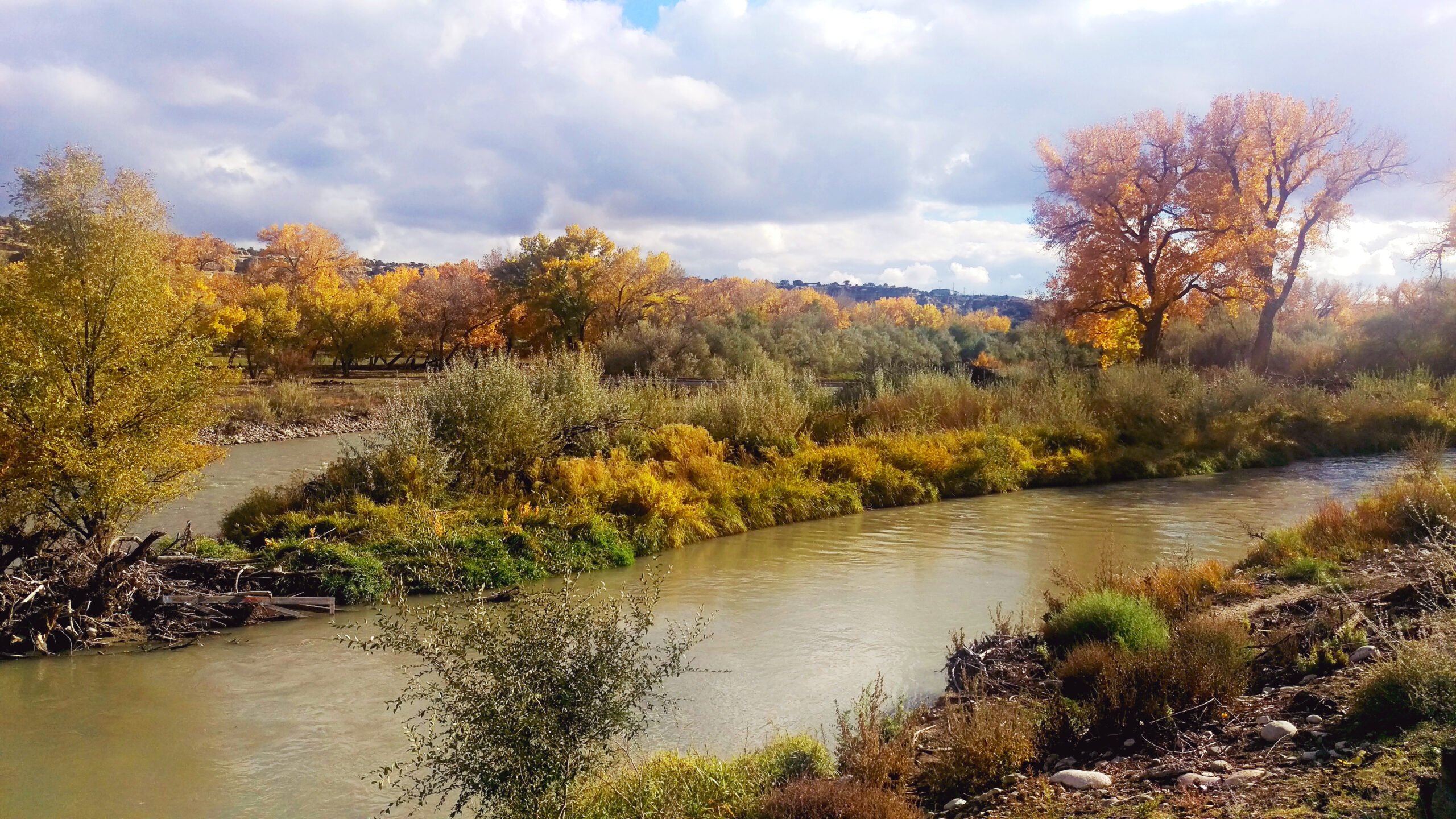
Elephant Butte Irrigation District (EBID) was selected for award for the Reclamation WaterSMART Drought Response Program. The project entitled, EBID Drought Resiliency Priority Projects: Watershed-scale Stormwater Monitoring and Capture proposes to address program tasks of a) increasing the reliability of water supplies through infrastructure improvements, through stormwater capture and aquifer recharge and b) projects to improve water management through decision support tools, modeling, and measurement, through increased system monitoring and a model decision support tool. NM WRRI will lead the development of an integrated system dynamics model decision-support tool, which will assess the systems’ water balance and related socio-economic data that allows for long-term future trend projection of the effect of stormwater supplies and a scenario of watershed-scale stormwater harvesting.
Rincon Subbasins 319 Project
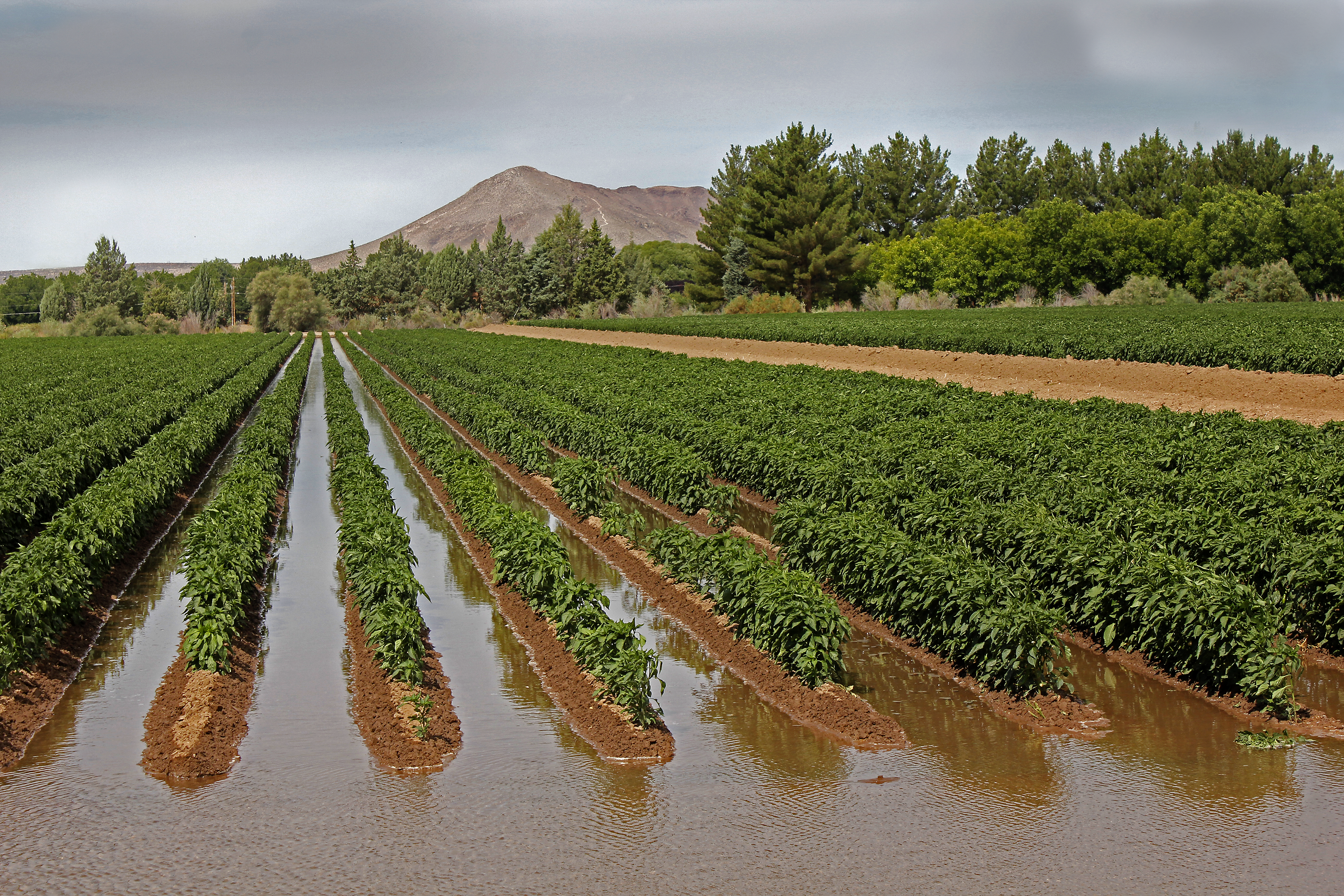
The NM WRRI has been selected for award by the New Mexico Environment Department (NMED) for a Watershed Implementation grant funded by EPA Clean Water Act Section 319 funds. The Rincon Sub-basins 319 Project implements a watershed restoration plan with the primary objective to reduce sediment transport including E. coli to the impaired reach of the Rio Grande through small-scale, low impact restoration practices. This project will also inform future project proposals within the larger Rincon Arroyo Watershed.
Outreach and Technical Support
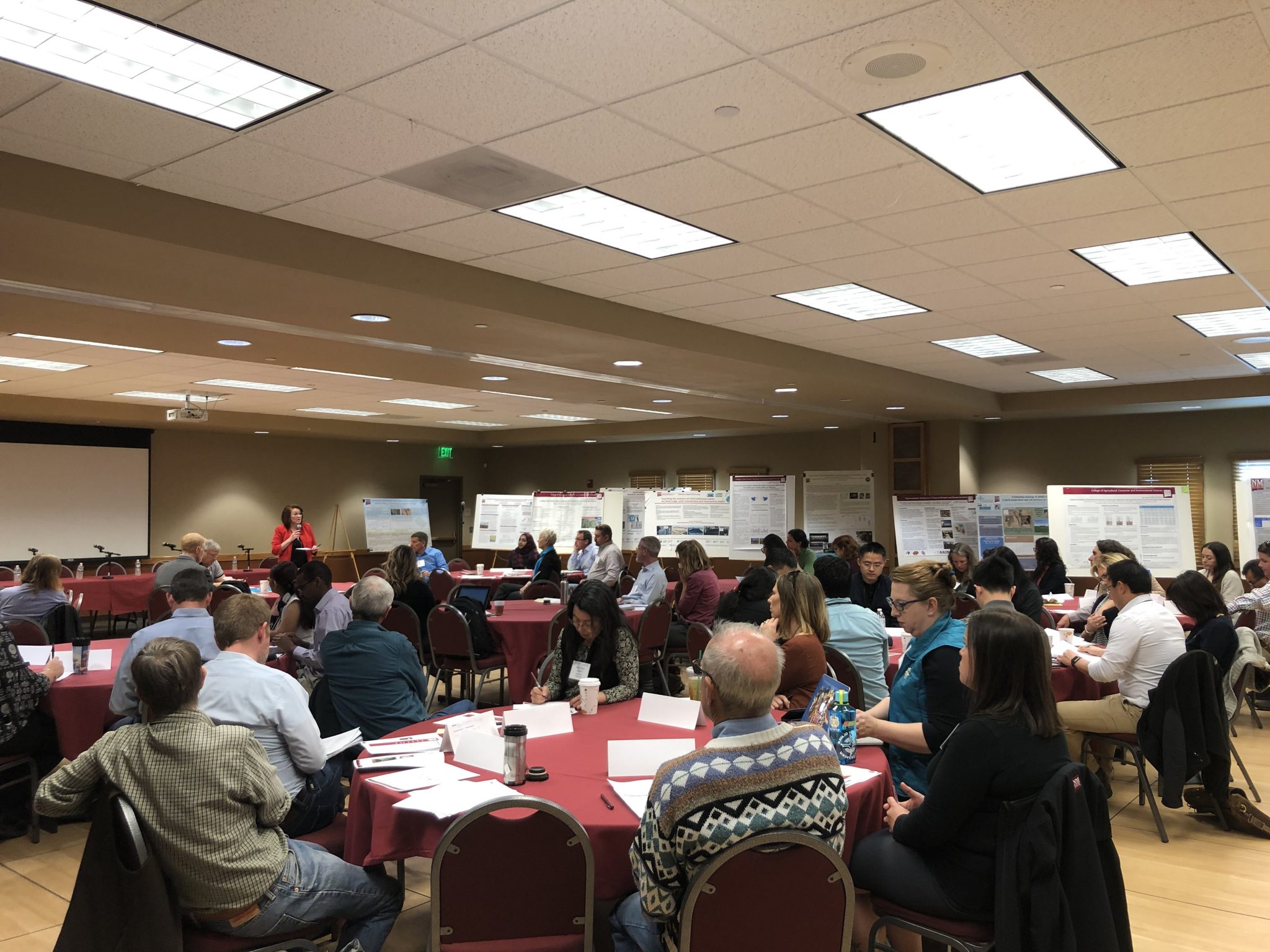
By organizing conferences and workshops such as the Annual New Mexico Water Conference—held each year since 1956—the Animas and San Juan Watersheds Conference, as well as an array of technical workshops, NM WRRI provides a forum to share water research findings, inform stakeholders, and ultimately address the pressing water issues facing New Mexico and the southwest.
Clean Drinking Water Technology
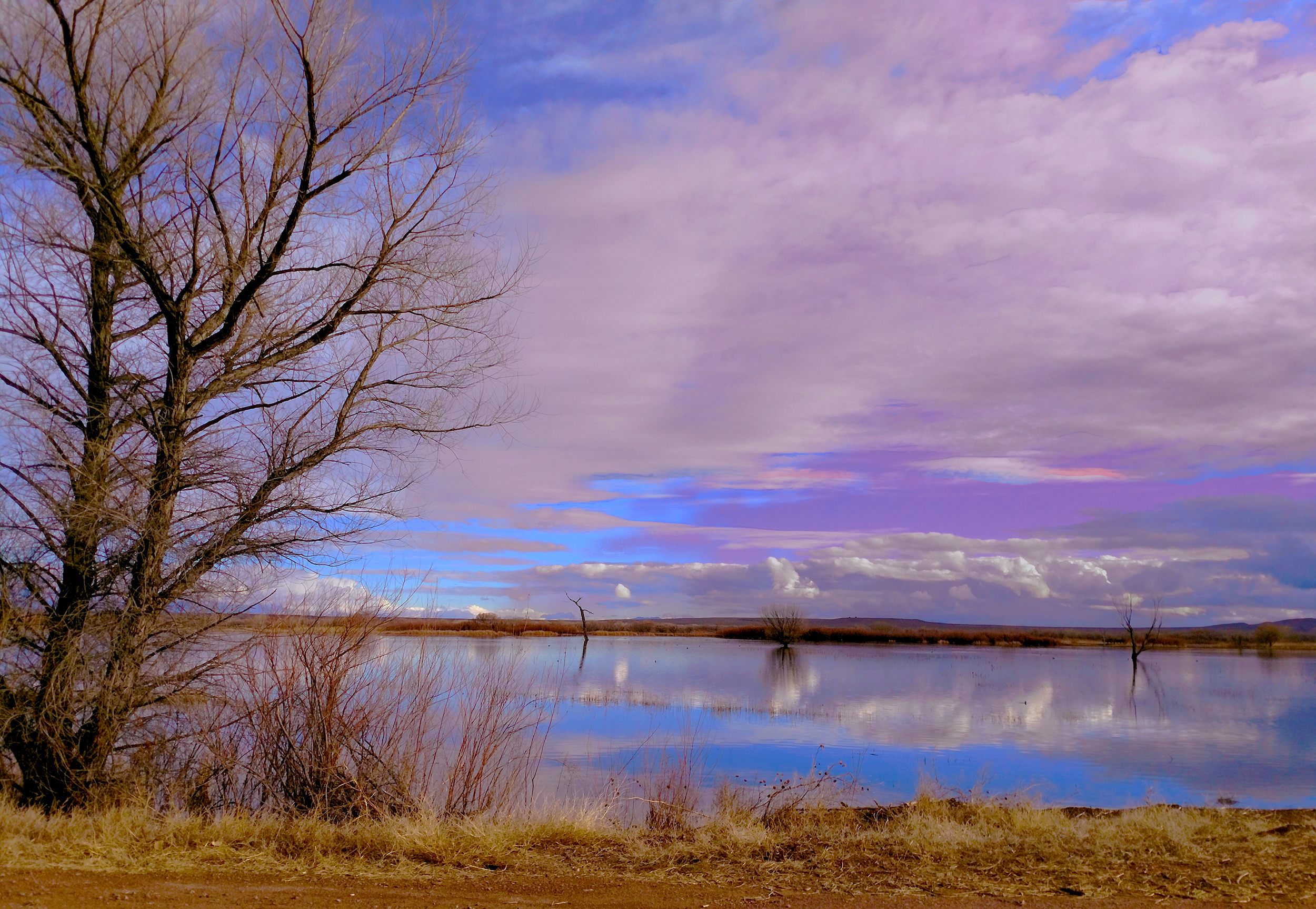
Dr. Antonio Lara and the Clean Drinking Water Team from New Mexico State University establish technologies for the treatment of heavy metals and pathogens from scarce and contaminated water sources, surface and ground, to produce potable water. Investigation results show that clay ceramic pellets effectively treat and help solve the intractable problem of water contaminated by uranium in New Mexico. The technologies convert polluted water to potable water inexpensively and are usable worldwide.
Community Hydrology Program
Hatch and Mesilla Valley Cooperative Watershed Management Program

The South Central New Mexico Stormwater Management Coalition’s ( Stormwater Coalition ’s ) proposal was selected for award by the Bureau of Reclamation for their WaterSMART Cooperative Watershed Management Program. The goals of the two-year project are to develop a community-based comprehensive watershed plan, prioritize project designs for the region, extend the group’s organizational development, increase collaborator development and community outreach, and assemble a diverse technical and stakeholder task force to develop the plans. The project management team includes NM WRRI as sub recipient and project planner, the Doña Ana County Flood Commission, the Elephant Butte Irrigation District, the Alamosa Land Institute, and the Jornada Resource Conservation & Development Council as fiscal agent.
